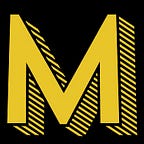Voyaging: The “Wedding Song” Singer, Citations, and Space Junk
There has been a lot of recent Voyager and Voyager record news lately, so I am going to round them all up here. Maybe this will turn into a regular thing on Misreader.
John Cohen and the “Wedding Song” Singer
I learned belatedly that John Cohen, the folk singer and ethnomusicologist passed away in September. Cohen recorded what has traditionally been titled “Wedding Song” on the Voyager Golden Record, the performance of which has usually been attributed to an unknown artist, and now to “Young girl of Huancavelica.”
When I tweeted about it, Asif Siddiqi, author of the seminal Sputnik and the Soviet Space Challenge, pointed out that this is extremely disregardful of the singer’s contribution, and I agree.
When I was trying to uncover the identities of the Voyager record musical contributors, I reached out to John Cohen to see if he had any knowledge of who the performer was. He didn’t, which was extremely disappointing, but he did give me all the details he could recall of what had happened during the recording itself. His letter (unedited) follows:
My wife Penny & I went briefly to Huancavalica in July or Aug 1964. We had fallen in with some Peace Corps people in Huancayo, and they sent us to Karen Bundy (also Peace Corps). Her project in Huancavalica was working with some young ladies (teens) doing traditional spinning of wool. When we visited her place,- a second or third floor apartment, we made the recording of the girls there. While we were recording the Song of Marriage, there was a commotion in the hall outside the apartment.. apparently the girl’s mother was concerned about what was happening.
Karen did the translation, Penny wrote it down. Because the song ends up with the wedding, it became known as a song of marriage.. somehow that morphed into Wedding Song. The repeated chorus says “what I fool I was, stupid fool.” This appealed to Penny because it expressed a reality rarely discussed. I loved the performance and the feeling it generated. We never had any real interchange with the singer… she was just one of the several girls who sang for us during that brief visit. I was moved that the song was so well understood by the young singer…perhaps for her it was a warning rather than of something she had experienced ( she was young…maybe thirteen) It was Karen’s friendship with the girls that made this happen. Karen knew they sang, she knew their songs. She helped us. I think she may have known of Penny’s father, the ethnomusicologist Charles Seeger.
Years later, at a record store in Lima — called Chasqui — the owners of the store heard my recording, and then played me a commercially recorded version of the song (sung in Spanish and Quechua), which mentions the name of a sargeant or a lieutenant.. who may have been the male perpetrator in the song. In our recording, I can hear his name sung with a Quechua ending. I donated all my Peruvian commercial records to the Library of Congress… it would be a major effort to locate it now.
I think Alan Lomax recommended our recording to the group who was assembling the music for the Voyager project. I think they used the recording because it represented South American tradition and the sound was so very evocative and human. I like to think that it was that feeling which could possibly reach some distant listener light years away. It was an attempt to communicate human emotion over the space of time.
The Ozma Records release of the record on vinyl did uncover many of the performer credits, but this was not one of them. Given how young the “Wedding Song” performer was at the time of the recording, it may be that she’s still alive today. I wish there was a way to find her.
_______________________
Getting Cited in Music and the Environment in Dystopian Narrative
While searching around for results on my own website, I accidentally stumbled on this passage on The Voyager Record: A Transmission in Music and the Environment in Dystopian Narrative by Heidi Hart. Read the passage, I’m extremely flattered! Get the book here.
_______________________
Voyager 2 Data Vs. Voyager 1 Data
The data that Voyager 2 has been sending back from the edge of the heliosphere and the space beyond the solar wind has been enormous, and different than what Voyager 1 could tell us due to a non-functional system on the faster spacecraft.
Read the details in this article by John Timmer on Ars Technica.
_______________________
Space Junk in the USA
Alice Gorman’s book Dr. Space Junk vs the Universe has been around for a while but it has finally been released in America from MIT press.
Dr. Gorman has always been a big advocate for my book and she even makes an appearance in it due to her discovery about the misidentification of the song “Moikoi” as “Devil Bird” on the record. Unlike “Wedding Song” though, the original performers were able to be identified.
Dr. Space Junk vs the Universe talks a lot about Voyager and other artifacts of human voyaging space, and it’s highly recommended.
_______________________
Kronos Quartet Riffs on the Voyager Record
There’s a new Terry Riley/Kronos Quartet album out, Sun Rings, which samples and reworks transmissions sent back to earth from the two Voyager probes. It’s also inspired and revisioning the Voyager record in a way. Pitchfork didn’t like it that much, but w/e.
